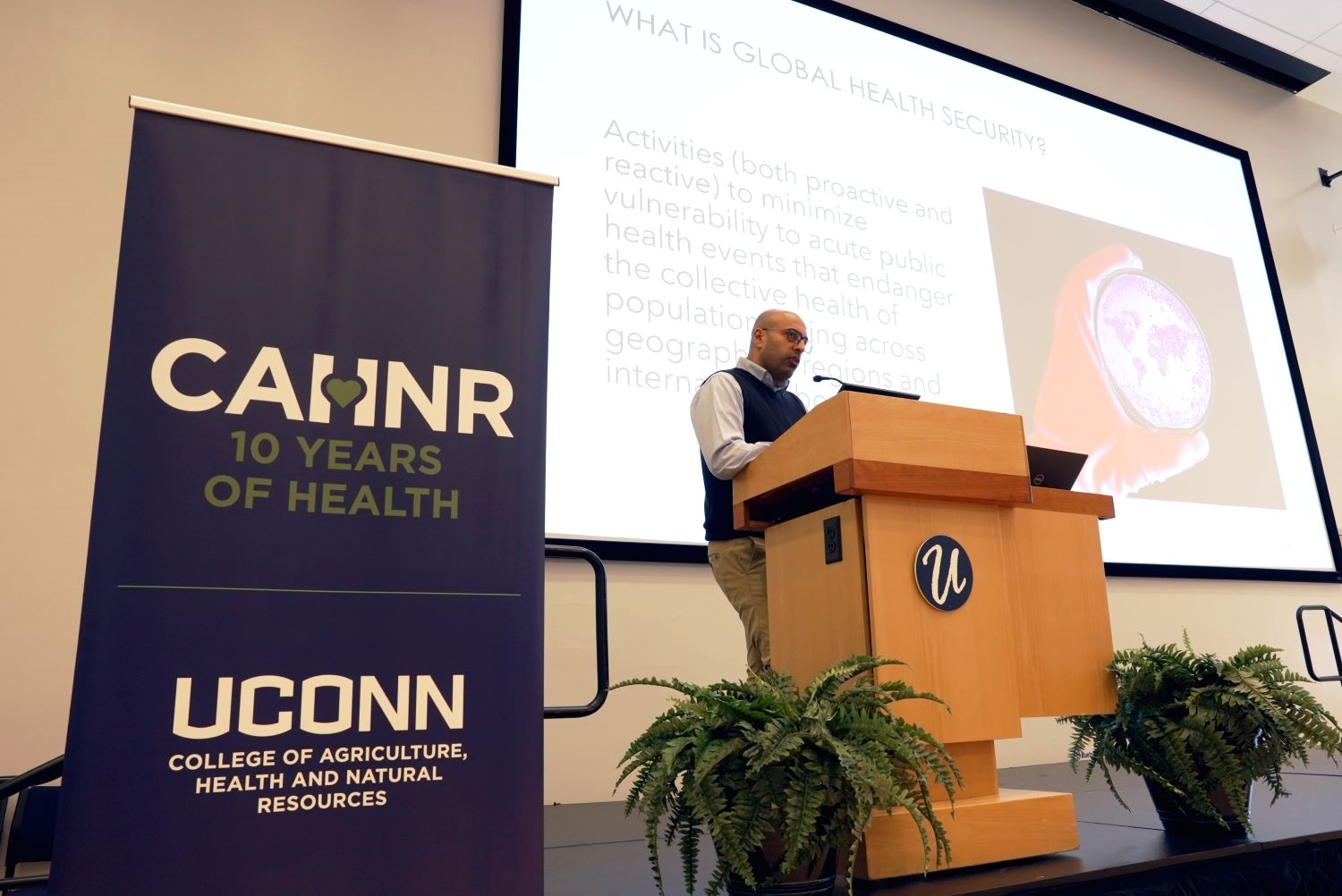UConn compares favorably in measures of affordability to the median among other flagship universities and several peer universities, according to a report reviewed during a legislative committee meeting Friday.
The report, compiled by the state legislature’s Program Review and Investigations Committee, was the final version of a preliminary document reviewed in late 2013 and includes a wide range of information on tuition, financial aid, and other indicators.
Admissions and outcome data indicate UConn’s quality has improved, the review also noted.

“We’re very pleased that the PRI report has shown the University of Connecticut excels in providing an affordable, high-quality education for our students, regardless of their economic means,” says Wayne Locust, UConn vice president for enrollment planning and management.
“This commitment to students and their families has been recognized by independent authorities like Kiplinger’s Personal Finance, which has consistently named UConn as one of the ‘best value’ public universities in the nation,” Locust says.
UConn continues to attract great students in remarkable numbers. While many colleges and universities have seen applications for admission level off or even decline in recent years, the number of applications to UConn has risen dramatically.
The University received nearly 30,000 applications this year, a 10 percent increase over last year, and SAT scores and diversity among applicants continues to climb.
When students arrive at UConn, nearly all of them stay, with 94 percent of entering first-year students returning after their freshman year. The average time to graduation is 4.2 years, and UConn’s graduation rates – including those of minority and economically disadvantaged students – are among the highest of any public research university in the nation.
“We look forward to working with lawmakers on the recommendations in the report and continuing to do all we can to provide a great education at a cost that is affordable to students and their families,” says Locust.
Some highlights of the Program Review and Investigations (PRI) report:
- Nearly four out of every five incoming in-state students (78 percent) at UConn received financial aid, and nearly 71 percent of all financial aid dollars go to in-state students.
- Need-based financial aid has grown by 81 percent since 2005-06, and has gone to a larger portion of individual students.
- UConn spent $74.9 million on institutional grant aid for students in 2012-13, which has grown by 75 percent beyond inflation since 2005-06.
- Compared to its peers, UConn’s prices are about in the middle or lower, and the cost of attending UConn has grown at a rate much lower than comparable institutions. According to the report, while the median cost of attending a state flagship university increased by 22 percent between 2008-09 and 2011-12, the increase at UConn was 9 percent.
- UConn’s federal student debt generally compares favorably to similar universities, and UConn short-term student default rate is low at 2.3 percent.
- UConn’s graduation and retention rates have “dramatically improved” since 1995, “favorably impacting affordability,” the report says.



